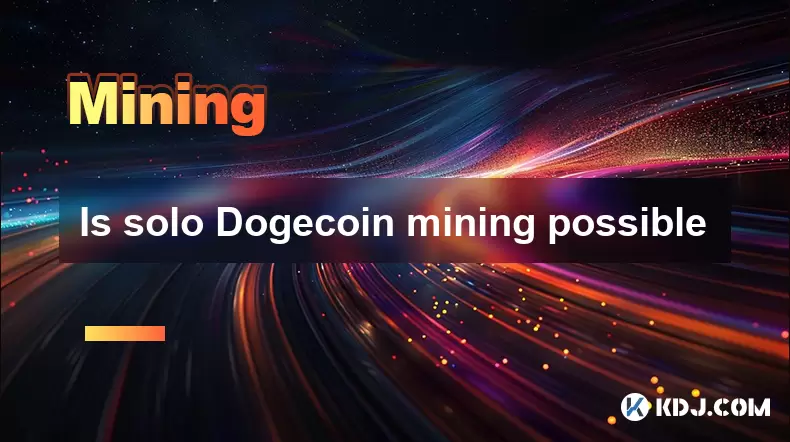-
 Bitcoin
Bitcoin $120400
1.77% -
 Ethereum
Ethereum $3615
7.90% -
 XRP
XRP $3.580
17.84% -
 Tether USDt
Tether USDt $1.001
0.06% -
 BNB
BNB $729.4
1.25% -
 Solana
Solana $179.9
5.04% -
 USDC
USDC $0.0000
0.01% -
 Dogecoin
Dogecoin $0.2311
8.22% -
 TRON
TRON $0.3226
4.04% -
 Cardano
Cardano $0.8490
12.85% -
 Hyperliquid
Hyperliquid $46.45
0.72% -
 Stellar
Stellar $0.4913
8.54% -
 Sui
Sui $4.027
2.00% -
 Chainlink
Chainlink $18.51
11.67% -
 Hedera
Hedera $0.2818
21.51% -
 Avalanche
Avalanche $24.03
7.40% -
 Bitcoin Cash
Bitcoin Cash $508.5
2.90% -
 Shiba Inu
Shiba Inu $0.00001496
3.24% -
 UNUS SED LEO
UNUS SED LEO $8.961
1.83% -
 Toncoin
Toncoin $3.264
3.13% -
 Litecoin
Litecoin $104.6
8.15% -
 Polkadot
Polkadot $4.389
6.11% -
 Uniswap
Uniswap $9.924
10.63% -
 Monero
Monero $337.9
0.49% -
 Pepe
Pepe $0.00001376
2.79% -
 Bitget Token
Bitget Token $4.830
2.46% -
 Ethena USDe
Ethena USDe $1.001
0.05% -
 Dai
Dai $1.000
0.02% -
 Aave
Aave $325.2
1.66% -
 Bittensor
Bittensor $423.7
-0.85%
Is solo Dogecoin mining possible
Solo Dogecoin mining offers full block rewards but demands significant computational power, technical setup, and patience due to low success odds and high network competition.
Jul 14, 2025 at 01:42 am

Understanding the Concept of Solo Mining
Solo mining refers to the process where an individual miner attempts to mine cryptocurrency blocks independently without joining a mining pool. In this setup, the miner uses their own hardware and software to solve cryptographic puzzles required for block validation. The rewards for successfully mined blocks go entirely to the solo miner. However, the probability of success depends heavily on the miner's computational power relative to the network’s total hash rate.
For cryptocurrencies like Dogecoin (DOGE), which operate on the Scrypt algorithm, solo mining is technically feasible. However, due to the high level of difficulty and competition from large-scale operations, the practicality of solo mining Dogecoin may vary significantly depending on several factors such as hardware capabilities, electricity costs, and the current network difficulty.
Technical Requirements for Solo Dogecoin Mining
To engage in solo Dogecoin mining, one must have a clear understanding of the technical requirements involved. This includes having the appropriate mining hardware, software, and a compatible wallet.
- Mining Hardware: High-performance GPUs or ASICs that support Scrypt-based mining are essential. While CPUs can technically mine Dogecoin, they are largely inefficient compared to modern GPUs.
- Mining Software: Applications such as CGMiner, BFGMiner, or EasyMiner are commonly used for Dogecoin mining. These tools need to be configured specifically for solo mining.
- Wallet Setup: A full node wallet is typically required for solo mining, as it maintains a complete copy of the blockchain and allows direct submission of mined blocks.
Proper configuration of these components ensures that the mining operation runs smoothly and increases the chances of successfully validating a block independently.
Challenges Associated with Solo Dogecoin Mining
Solo Dogecoin mining comes with its own set of challenges. One of the primary concerns is the low probability of finding a block due to the immense hashrate competition from mining pools and industrial-scale farms. Because the network difficulty adjusts dynamically, solo miners with limited resources may find themselves waiting extended periods before earning any reward.
Additionally, there is the issue of inconsistent income. Unlike pooled mining, where rewards are distributed more frequently based on contributed hashrate, solo mining results in either a full block reward or nothing at all. This unpredictability can make it financially risky for individuals who rely on mining as a steady source of income.
Energy consumption and maintenance costs also play a crucial role. High electricity usage combined with potential hardware wear and tear could outweigh the benefits of solo mining if the operation isn’t optimized efficiently.
Steps to Begin Solo Mining Dogecoin
Starting with solo Dogecoin mining involves several detailed steps that require careful execution.
- Download and Configure a Full Node Wallet: Obtain the official Dogecoin Core wallet from the project’s website. Allow it to sync fully with the blockchain, which can take several hours or even days depending on your internet speed and system performance.
- Set Up Mining Software: Choose a suitable mining application like CGMiner or BFGMiner. Modify the configuration files to point to your local wallet rather than a remote pool server.
- Adjust Mining Parameters: Ensure that the mining software connects directly to your local wallet RPC interface by specifying
localhostand the correct port number (usually 22556 for Dogecoin). - Monitor Mining Activity: Use logging features within the mining software to track accepted shares, rejected shares, and overall hashrate performance. Adjust intensity and thread settings for optimal efficiency.
- Maintain System Stability: Regularly update both wallet and mining software to ensure compatibility and security. Monitor temperature levels and power consumption to avoid overheating or unnecessary energy waste.
Each step plays a critical role in ensuring that your solo mining rig operates effectively and contributes meaningfully to the Dogecoin network.
Comparing Solo Mining vs Pool Mining for Dogecoin
When deciding between solo and pool mining, it's important to understand the trade-offs involved. Pool mining offers more consistent payouts, albeit smaller ones, since rewards are shared among participants based on contributed hashrate. It lowers the variance associated with block discovery and provides a steadier income stream.
In contrast, solo mining offers potentially larger rewards when a block is found but comes with higher variance and longer intervals between successful finds. For those who prioritize independence and wish to avoid pool fees, solo mining remains an attractive option despite its risks.
The decision ultimately hinges on personal preference, available resources, and risk tolerance. Those with substantial computational power and patience might lean towards solo mining, while newcomers or those seeking regular returns often opt for pool participation.
Frequently Asked Questions
Q: Can I use a CPU for solo Dogecoin mining?
A: While technically possible, CPU mining is highly inefficient for Dogecoin due to the Scrypt algorithm’s memory-intensive nature. Modern GPUs or ASICs are far superior in terms of performance and energy efficiency.
Q: Is there a minimum hashrate required for solo Dogecoin mining?
A: There is no strict minimum, but a hashrate significantly lower than the network average will result in extremely low chances of finding a block. It’s advisable to assess your hardware’s performance against the current network difficulty before proceeding.
Q: Do I need to keep my wallet open during solo mining?
A: Yes, your full node wallet must remain running and synchronized with the network at all times. It acts as the interface through which your mining software communicates with the Dogecoin blockchain.
Q: Are there any special configurations needed in the mining software for solo mode?
A: Yes, you must configure your mining software to connect to localhost instead of a pool address. Additionally, you’ll need to input your wallet’s RPC credentials (username and password) to authorize communication between the miner and the wallet.
Disclaimer:info@kdj.com
The information provided is not trading advice. kdj.com does not assume any responsibility for any investments made based on the information provided in this article. Cryptocurrencies are highly volatile and it is highly recommended that you invest with caution after thorough research!
If you believe that the content used on this website infringes your copyright, please contact us immediately (info@kdj.com) and we will delete it promptly.
- Bitcoin Holdings and the Smarter Web: A Match Made in Digital Heaven?
- 2025-07-18 12:10:12
- Bitcoin, MSTR & Saylor's Strategy: A Winning Trifecta?
- 2025-07-18 08:30:13
- Bitcoin Mortgages Down Under: A New Wave in Australian Homeownership?
- 2025-07-18 08:50:12
- Cryptocurrencies, Bitcoin, and the Next Wave: What's Coming?
- 2025-07-18 08:50:12
- Maharashtra Government Nurses Launch Indefinite Strike: A Healthcare Crisis?
- 2025-07-18 04:30:13
- Hilbert Group, Syntetika, and Tokenization: Bridging DeFi and Institutional Finance
- 2025-07-18 05:30:12
Related knowledge

How are crypto mining profits taxed?
Jul 14,2025 at 12:28am
Understanding Cryptocurrency Mining and TaxationCryptocurrency mining involves validating transactions on a blockchain network and earning rewards in ...

How to keep a mining rig cool
Jul 12,2025 at 01:42pm
Understanding the Importance of Cooling in Mining RigsCryptocurrency mining is an intensive process that places heavy demand on hardware components, p...

How to mine crypto on a gaming PC
Jul 16,2025 at 12:00pm
What is Crypto Mining on a Gaming PC?Crypto mining involves using your computer's processing power to validate transactions on a blockchain network. A...

How to set up a crypto miner
Jul 16,2025 at 09:14am
Understanding Ethereum Gas Fees: What Are They and How Do They Work?Ethereum gas fees are a fundamental aspect of the network, representing the cost r...

Can you mine crypto on a laptop?
Jul 16,2025 at 02:21am
Is It Feasible to Mine Cryptocurrency on a Laptop?Mining cryptocurrency on a laptop is technically possible, but feasibility depends heavily on the ha...

Is crypto mining worth it?
Jul 16,2025 at 01:21am
Understanding the Basics of Crypto MiningCrypto mining refers to the process of validating transactions on a blockchain network by solving complex mat...

How are crypto mining profits taxed?
Jul 14,2025 at 12:28am
Understanding Cryptocurrency Mining and TaxationCryptocurrency mining involves validating transactions on a blockchain network and earning rewards in ...

How to keep a mining rig cool
Jul 12,2025 at 01:42pm
Understanding the Importance of Cooling in Mining RigsCryptocurrency mining is an intensive process that places heavy demand on hardware components, p...

How to mine crypto on a gaming PC
Jul 16,2025 at 12:00pm
What is Crypto Mining on a Gaming PC?Crypto mining involves using your computer's processing power to validate transactions on a blockchain network. A...

How to set up a crypto miner
Jul 16,2025 at 09:14am
Understanding Ethereum Gas Fees: What Are They and How Do They Work?Ethereum gas fees are a fundamental aspect of the network, representing the cost r...

Can you mine crypto on a laptop?
Jul 16,2025 at 02:21am
Is It Feasible to Mine Cryptocurrency on a Laptop?Mining cryptocurrency on a laptop is technically possible, but feasibility depends heavily on the ha...

Is crypto mining worth it?
Jul 16,2025 at 01:21am
Understanding the Basics of Crypto MiningCrypto mining refers to the process of validating transactions on a blockchain network by solving complex mat...
See all articles

























































































